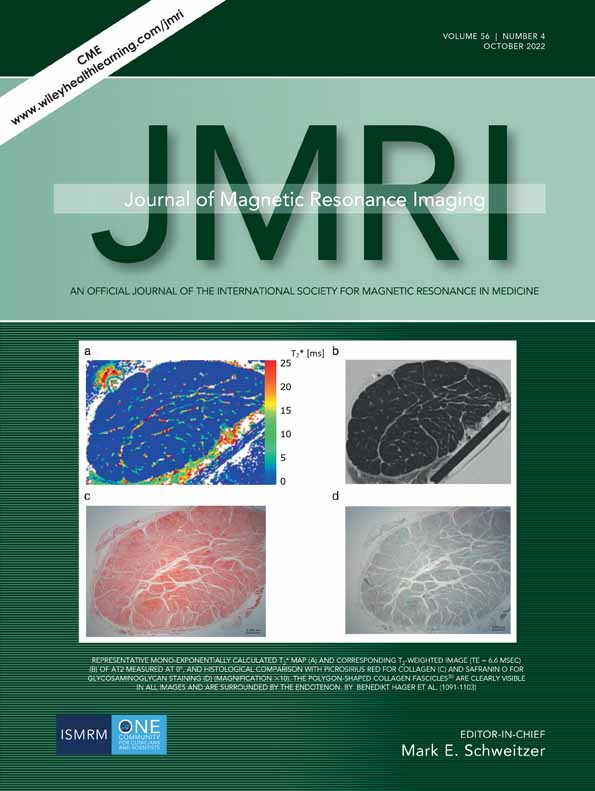Magnetic Resonance Imaging Quantification of Accumulation of Epicardial Adipose Tissue Adds Independent Risks for Diastolic Dysfunction among Dialysis Patients
Hang Zhou and Dong-Aolei An contributed equally to this work.
All authors have contributed significantly, and that all authors are in agreement with the content of the manuscript. The authors claim that none of the material in the paper has been published or is under consideration for publication elsewhere.
Abstract
Background
Diastolic dysfunction (DD) frequently occurs in dialysis patients; however, the risk factors of DD remain to be further explored in such a population. Epicardial adipose tissue (EAT) volume has proven to be an independent clinical risk factor for multiple cardiac disorders.
Purpose
To assess whether EAT volume is an independent risk factor for DD in dialysis patients.
Study Type
Case–control study.
Population
A total of 113 patients (mean age: 54.5 ± 14.4 years; 41 women) who had underwent dialysis for at least 3 months due to uremia.
Field Strength
A 3 T, steady-state free precession (SSFP) sequence for cine imaging, modified Look–Locker imaging (MOLLI) for T1 mapping and gradient-recalled-echo for T2*.
Assessment
All participants were performed cardiac magnetic resonance imaging (MRI) and echocardiogram. For MRI images analysis, borders of the EAT were manually delineated, as well as, pericardial adipose tissue (PeAT) and paracardial adipose tissue (PaAT), T1 mapping, T2* mapping, global longitudinal strain (GLS), and left atrial strain. For echocardiogram assessments, the thickness of PaAT, e' velocity, E velocity, E/e ratio, A velocity, and deceleration time were measured.
Statistical tests
Univariate and multivariate logistic regressions were performed to explore the independent risk factors for DD. P value less than 0.05 was considered as significant.
Results
Compared with the DD(−) group, the DD(+) group had significantly more epicardial tissue fat (18.5 ± 1.3 vs. 30.9 ± 2.3) In addition, EAT volumes increased significantly with the grades of DD (grade 1 vs. grade 2 and 3: 27.9 ± 15.9 vs. 35.4 ± 13.1). Moreover, EAT had significant correlations with T1 mapping, T2* mapping, GLS, left atrial strain, e' velocity, and E/e ratio. EAT accumulation added an independent risk for DD (Odds Ratio = 1.03) over conventional clinical risk factors including age, diabetes mellitus, and hemodialysis.
Data Conclusion
EAT was associated with diastolic function, and its accumulation may be an independent risk factor for DD among dialysis patients.
Evidence Level
2
Technical Efficacy
Stage 2
Conflict of Interest
The authors of this manuscript declare no relationships with any companies, whose products or services may be related to the subject matter of the article.




